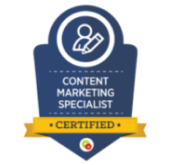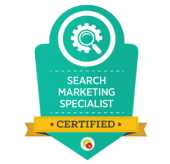Why are paid ads on Facebook the go-to for marketers?
Well, with Facebook advertising, you can reach your exact audience.
This is a big benefit – huge – that makes Facebook advertising one of the most targeted ways for businesses to engage with an audience they know.
You can target specific locations, ages, interests, behaviours and more,
Here are some Facebook Revenue and Usage Statistics (2020) courtesy of Business of Apps that would explain why:
- 2.45 billion monthly active Facebook users registered as of Q3 2019 – making it the world’s biggest social media platform
- 90 million business pages are on Facebook
- 140 million businesses use Facebook every month
- 65% of users use their account to view photos, 57% to share content with users’ networks, and 46% to watch videos
So, why do something else, you ask?
According to Oberlo and ThinkwithGoogle, there are some very good reasons to branch out with YouTube:
- 2 billion people use YouTube worldwide
- 62% of businesses use YouTube as a channel to post video content
- 1 billion hours of video are watched on YouTube every day
- 90% of people say they discover new products or services on YouTube
- Almost 8/10 marketers consider YouTube to be the most effective video marketing platform
So, the real question should be: is relying on Facebook enough?
4 Reasons why you should YouTube it too…
There are so many ways you can be creative and provoke an emotional connection with video.
Think about how emotional you get with the John Lewis Christmas advert and any Pixar movie.
This can be achieved through animation or real-life shots/images with happy people using your product (or something related to it, like a laptop or mobile device), an actor/ spokesperson with an engaging voice, and the soundtrack.
All of these elements combined will elicit emotions to simulate the end-user experience. Plus, the human brain processes visuals 60,000 times faster than text.
Easy to reach your target audience
You can target audiences based on gender, age, location, interests, and more – just like Facebook.
Video ads can be targeted to reach:
- Affinity audiences (people with a strong interest in topics related to your product or service to promote brand awareness),
- Custom affinity audiences (audiences tailored more to your brand)
- In-market audiences (people searching for and actively considering buying a product or service like yours)
You can also target using relevant keywords, topics and placements – the latter being YouTube channels for your ad to appear at the beginning to reach that audience too.
Retargeting and remarketing opportunities
By connecting your YouTube account to your Google Ads account, you can retarget people who have subscribed to your channel or seen/ liked/ engaged with your videos or ads.
Because of their active interest, you can easily set up remarketing campaigns with personalised content and ads to drive conversions.
Make your campaign mobile-friendly
Optimise your pages for mobile use because more than 70% of YouTube watch times come from mobile devices.
Google prioritises paid ads with links that have been optimised for mobile use too.
With Google Ads, you can also target users who view your ad via mobile devices to improve engagement metrics like conversions, with a bidding strategy in place.
3 Tips to get started with video adverts
We get that not everyone has the knowledge or expertise when it comes to creating a video ad.
What makes the most engaging ad? Here’s how to get those creative juices flowing…
- Write a script → Start by brainstorming ideas with the campaign in mind. Who is the audience? What do you want the viewer to do? What is the campaign message? With these answers, you can write a short script. Depending on your ad type (skippable or non-skippable), your ad should ideally be 15-20-seconds… if you think about an average person’s attention span. If you’re including a spokesperson or voice-over – read it aloud and time yourself to gauge an accurate length. Remember those emotive words for ad headlines and any words in your script.
- Outsource creators and consultants → If you don’t have an in-house video animator – you can find a freelancer to suit your budget from sites like Fiverr or Upwork. Simply provide them with your specifications, script, assets (images, links, audio, etc.) and NDA, then agree to a deadline. Consider outsourcing consultants who specialise in social media marketing to help get you started too.
- Upload and link to Google Ads → When your video is ready, upload it to your YouTube channel (not got one? It’s easy to set up). Think about your video headline, description and tags – these will help you to rank higher for SEO. Then it’s simple to link to your Google Ads account to manage your YouTube campaign. Don’t forget to UTM any links so you can track clicks via Google Analytics Goals.
YouTube ads are an investment…
As a rule of thumb, it takes 3-6 months to see the benefits of video campaigns… which is great for building your brand or product awareness.
Isn’t that a long time to wait for results compared to Facebook ads?
It might sound that way at first… but if you have a new YouTube account or product/ service, you’ll need this time to establish yourself with a YouTube audience.
This means including video ad campaigns at the start of your campaign strategy, which lets you monitor your metrics for longer, tweak bidding strategies based on weekly audits, and optimise your ad’s performance.
This timeframe also allows you ample time to craft a remarketing campaign, as well as create shorter ‘teaser’ ads you can release later on along your strategy timeline, with messaging and CTAs that are designed to drive conversions.
Another key thing to consider is: what are your competitors doing?
If they’re not using YouTube ads in their social media strategy, there are up to 2 billion YouTube users watching 8 billion hours of video per day, with 90% discovering new products to set yours apart from businesses who are doing the same old, same old.
With the impact of COVID-19, MarketingWeek advises brands need to “change their media, messaging and touchpoints to ensure they are reaching consumers with communications they are most interested in.
Marketers should look at how budgets can be spent most effectively to maintain a presence and key brand metrics if your ad spend does need to be reduced.












